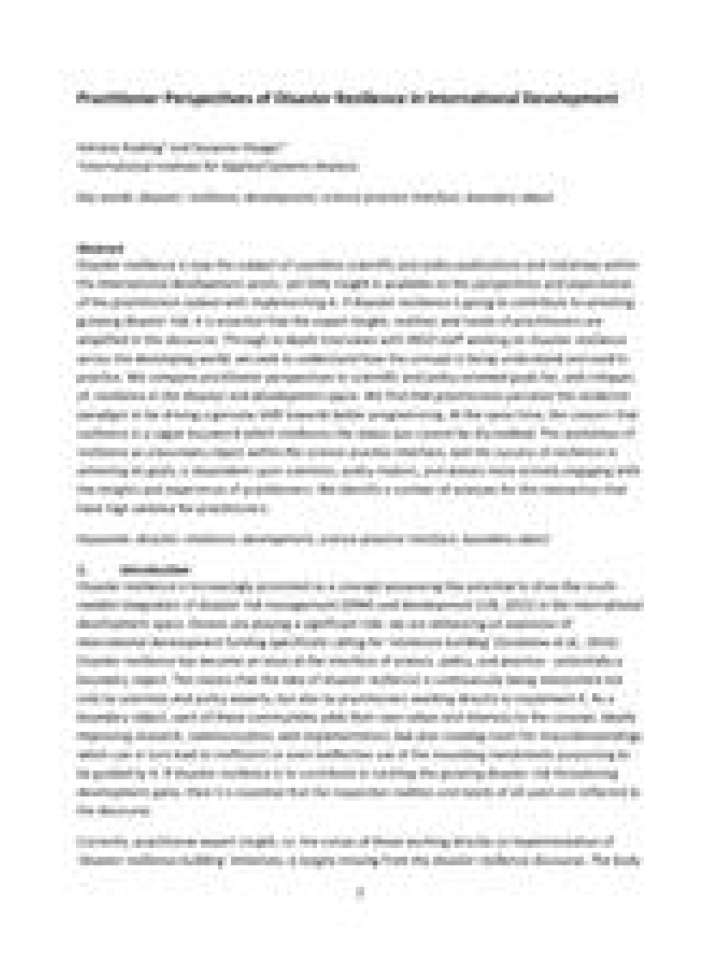Practitioner perspectives of disaster resilience in international development
Disaster resilience is now the subject of countless scientific and policy publications and initiatives within the international development sector, yet little insight is available on the perspectives and experiences of the practitioners tasked with implementing it. If disaster resilience is going to contribute to arresting growing disaster risk, it is essential that the expert insight, realities and needs of practitioners are amplified in the discourse. Through in-depth interviews with INGO staff working on disaster resilience across the developing world, this paper seeks to understand how the concept is being understood and used in practice. It is compared practitioner perspectives to scientific and policy-oriented goals for, and critiques of, resilience in the disaster and development space. One of the finds is that practitioners perceive the resilience paradigm to be driving a genuine shift towards better programming. At the same time, the concern that resilience is a vague buzzword which reinforces the status quo cannot be discredited. The usefulness of resilience as a boundary object within the science-practice interface, and the success of resilience in achieving its goals, is dependent upon scientists, policy-makers, and donors more actively engaging with the insights and experience of practitioners. This document identifies a number of avenues for this interaction that have high salience for practitioners.
Explore further
